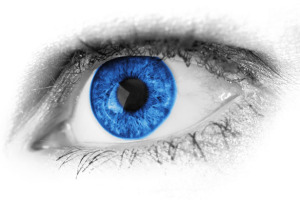 Did you know that serious blows to the head happen every eight seconds? Even though they happen all the time, brain injuries are invisible to the naked eye. Or at least, they have been. But there’s some interesting news on the horizon indicating that medicine and technology may soon work together to allow evidence of concussions to become more visible.
Did you know that serious blows to the head happen every eight seconds? Even though they happen all the time, brain injuries are invisible to the naked eye. Or at least, they have been. But there’s some interesting news on the horizon indicating that medicine and technology may soon work together to allow evidence of concussions to become more visible.
In a recent TEDMED talk, neuroscientist, Dr. Uzma Samadani, explained a new theory. She believed that less severely brain-injured patients would be able to watch television, while more severely injured patients would not. With that theory, she wrote a software program to track the pupils of brain-injured patients as they followed action taking place on TV. Then she compared the results of those tests with the eye movements of a healthy group of people. The software was able to detect when the eye lagged, even if it did so for just a fraction of a second.
Using those results, Dr. Samadani established a neuro-diagnostic company, Oculogica. She branded the software technology, EyeBox. A few prototypes are out there while the technology awaits approval from the FDA.
After reading that story, and in case you read it too, here are my thoughts:
• The EyeBox requires very little calibration. That means an injured child doesn’t have to sit through the calibration procedures. I see this as valuable – the less you have to learn how to take the test, the better. Remember the old palm pilots and the calibration required before the user could use the screen? Same idea. When dealing with a brain injured patient, particularly a child, the less repetition and instruction, the better
• The EyeBox has implications for pediatrics. Most of the work children do in school requires visual processing. Eye movement is normally effortless, but a concussion makes eye movement difficult. Our neurocognitive testing starts at the age of 10, so if parents can get information on a younger child, this would be a benefit.
• When it comes to youth sports, the EyeBox could be a valuable tool if used in conjunction with current practices. That’s the case with our ImPACT testing – it is used in conjunction with a good history of the patient as well as a physical exam. It does not give a “yes” or “no” answer by an untrained technologist.
• As for whether I would use it if it became available? Possibly. There is a risk/benefit ratio here. There is probably no risk to using it. However, it may be expensive. On the flip side, it could be very beneficial for patients who can’t take the ImPACT test. If there are broader studies to confirm it, and if the technology proves to be reliable, reproducible and available, I would consider it. I currently do eye movement testing, and having the ability to quantify it could be helpful. FMRI is absolutely a great test, but it is prohibitively expensive. Each test costs several thousand dollars. Even though there are a few here in San Antonio, insurance companies don’t cover it.
The bottom line: For now, the ImPACT test is free and is an excellent tool to include in diagnosing, treating and managing concussions.
Related Posts
- 55Kudos to Trinity Christian Academy in Addison Texas. This school serves as a great example of how to strategically handle the aftermath of concussion among young athletes. You may have heard the recent NPR story on this subject. For those who didn’t, here’s the condensed version. A Trinity football player…
- 53With Super Bowl madness winding down, the issue of concussion is coming up. And once again, we’re talking about the NFL. I’m a great fan of football, and Sunday found me like it did 111.5 million other viewers - sitting in front of the TV watching the match-up between Seattle…
- 53In a recent article, the Wall Street Journal reported that the NCAA, in partnership with the U.S. Department of Defense, is undertaking a 3 year $30 million dollar study pertaining to head injuries and concussions. Of note, the NCAA has already agreed to pay $75 million to settle a class…
- 50NFL Linebacker Chris Borland’s recent decision was a brave one; he walked away from a $3 million contract over the issue of concussions. Last August, the 24-year old Borland was just starting out as a rookie linebacker for the San Francisco 49ers. During his first training camp he suffered a…
- 50A proper concussion management program requires many people filling many roles to be successful. A successful clinic requires many people filling many roles to provide exceptional patient care. I would be unable to do my job without the support that I have. Tranette Ledford is one of those people. In…
